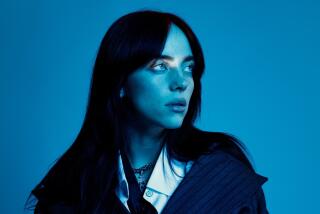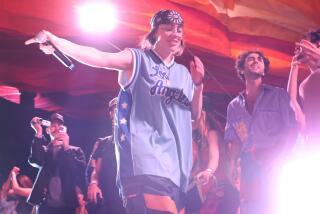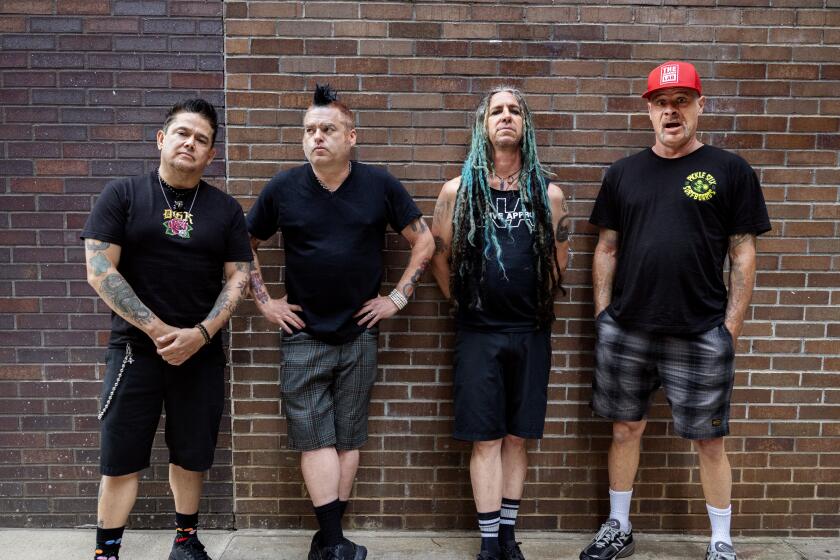Billie Eilish, music’s biggest anti-pop star, returns home a hero
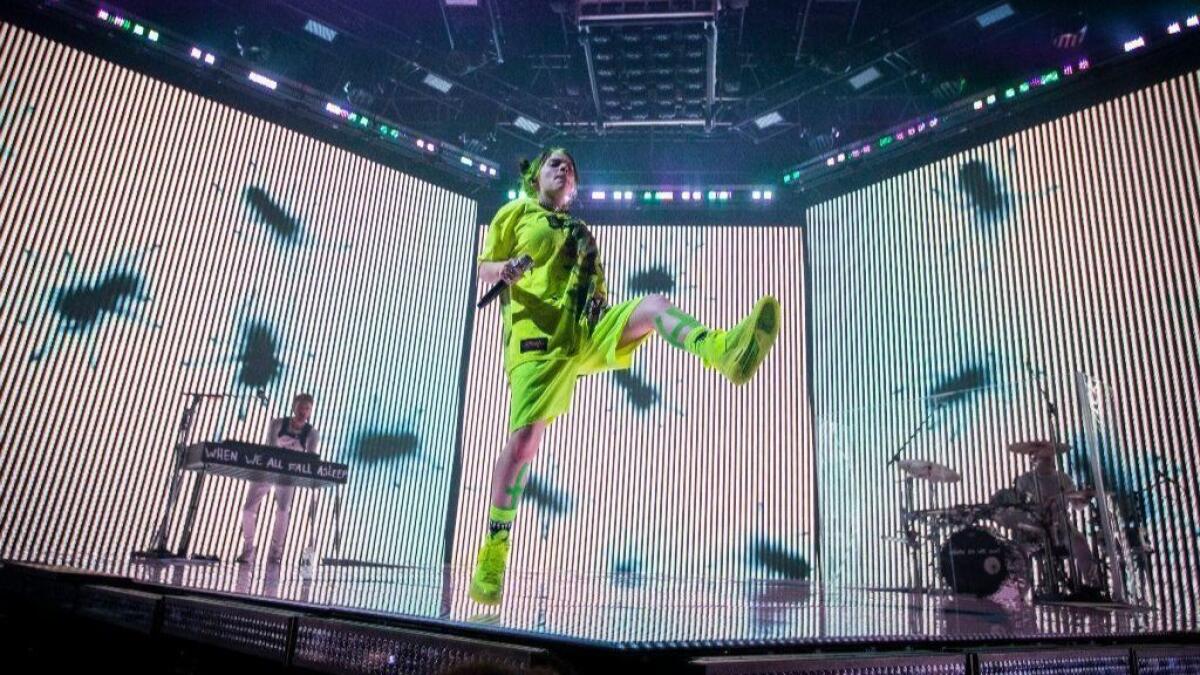
The green slime came in waves on Tuesday. In the lines to get into the Shrine Expo Hall, teenage girls were covered in it, head to toe. Inside, as the 17-year-old pop singer Billie Eilish awaited her headline set, that green dripped from her fans’ sweaty hair. At the merch booth, everything — hoodies, T-shirts, shorts — was slathered in it.
Not actual slime, to be sure. But a particular shade of sticky neon green that the L.A.-raised Eilish has recently adopted as her battle flag. It’s now in her hair, on her stage outfits, in the frames of her sunglasses. To walk out in the crowd and see just how quickly her legion of fans draped themselves in it is to understand just how important Eilish is to Gen Z, and how quickly fans respond to her imagination.
Eilish is maybe the most transgressively popular artist in pop music today, with billions of streams and a Billboard 200 chart-topping LP, “When We All Fall Asleep, Where Do We Go?” The album — an experimental goth-pop masterwork produced with her brother Finneas O’Connell — is eerie and minimal and, occasionally, downright scary.
Over 90 minutes at the Shrine on Tuesday (one of three hometown headline shows in L.A. this week, and her first return home as a global superstar), she fully translated its claustrophobia onto one of pop’s biggest stages.
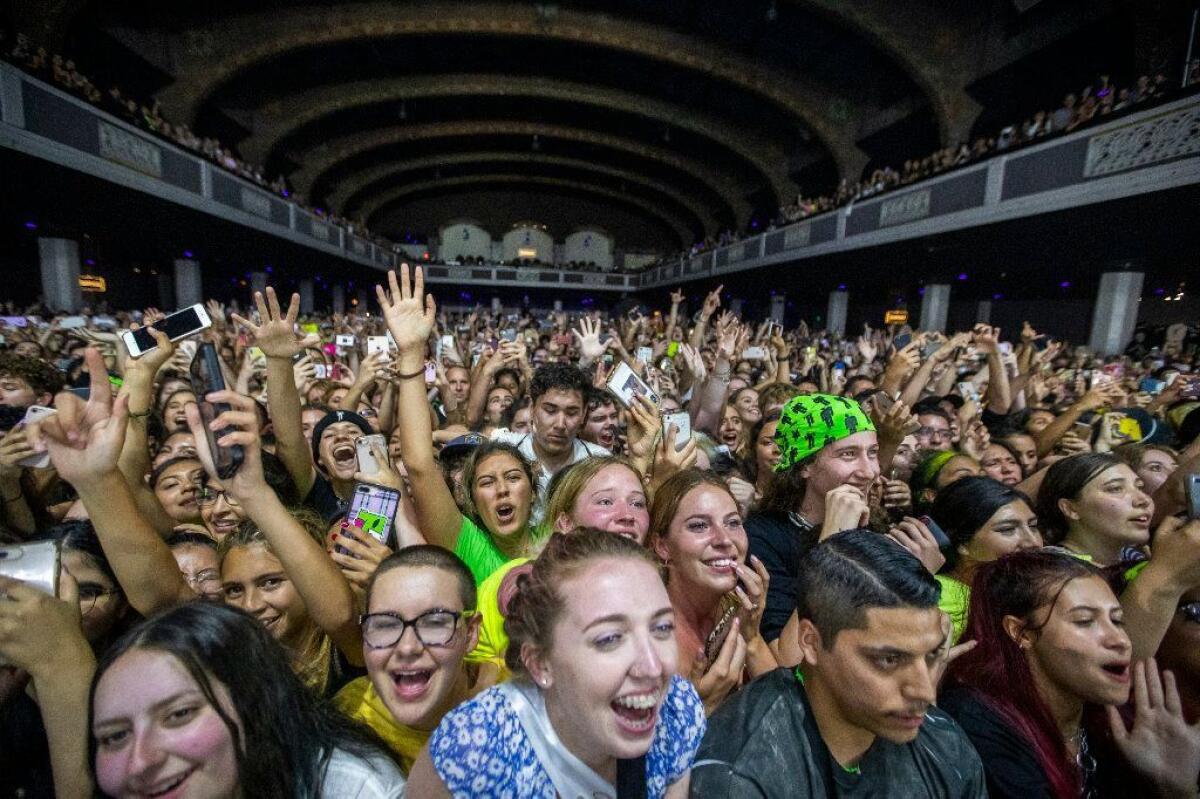
In the two years since Eilish released the wispy, melancholic “Ocean Eyes,” she’s almost single-handedly redefined the sound of streaming — whispered vocals, intimate headphone-centric mixes and crisp electronic editing. Some call it “Spotify Pop,” and in less talented hands, those tricks can turn into perpetually chilled-out digital bathwater.
But Eilish is an absolute rock star, and nothing she makes is background music. When she walked onto the Shrine stage, framed in silhouette before a projection of her own cartoon nightmares, the crowd wasn’t just rapt. Draped in her shade of green, they were declaring an alliance.
As a performer, Eilish has always worked an anti-pop-star lane: something of a Trent Reznor for the Instagram era, though less interested in pure antagonism and more in the dark twists of today’s SSRI-soaked psyches. Her confrontationally oversized clothes, her projections of slithering insects and gaudy sports cars and black bloody tears weren’t meant to shock, but rather to envelop the room in a mood. A late-night YouTube binge while the world burns.
But she’s also a musician of serious prowess. In her rise to pop stardom, Eilish has kept her small-band format, with just a live drummer and O’Connell on various instruments. As her stages get bigger, her singing and stage presence have become ever more poised and incendiary. While her brother handled guitar and keys, high kicks and writhing were her instruments.
This set was especially auspicious, as she’d attended her first ever concert at the Shrine (The Neighbourhood, when she was 13). “We stood right back there,” she told the crowd, pointing to the far corner of the floor. Her view had changed, but her connection hadn’t.
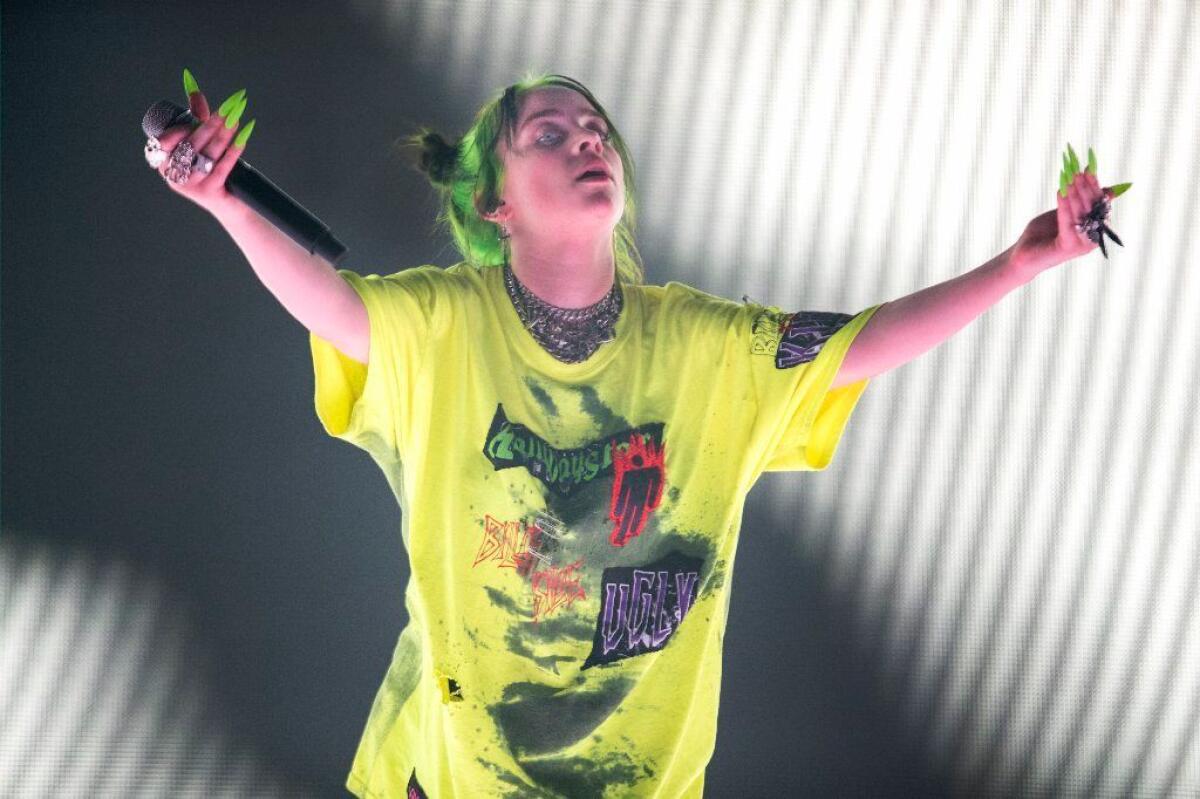
Her heavier, danceable singles such as “Bad Guy” and “You Should See Me in a Crown” are, by now, fixtures in teen life. Her lyrics are sometimes gleefully provocative: On “Bad Guy,” she says, “I’m that bad type / Make your mama sad type / Make your girlfriend mad tight / Might seduce your dad type.” But on “Xanny,” she watches friends lose themselves to self-medication: “They just keep doing nothing / Too intoxicated to be scared.”
The lines between vocalist and crowd were drowned out when she sang them. “Xanny,” “All the Good Girls Go to Hell” and “Bellyache” are, at the right volume, party tracks that can transform a room (and did on Tuesday). But they’re also affecting on a solo bus ride home, and the shift between these songs’ close-confidence on record and gut-punch bass onstage was arresting.
“If you absolutely despise yourself, this song is for you,” she said, introducing “Idontwannabeyouanymore.” Pretty dark as crowd-rallying cries go, but rally they did.
But Eilish was at her best at her quietest, when her skills as a writer and singer were laid bare. When she was lofted in the air with O’Connell in a bed to perform “I Love You” in front of a giant moon, the scene looked a little local-theater-ish. But if you closed your eyes, you could hear one of pop’s most vivid, challenging songwriters wringing something new and wild from the simplest materials.
She came back down for closer “Bury a Friend,” her weirdest and most addictive single yet. The song’s deadpan chants, which gave her album its title, here became earnest. No, really: Where do we go when our minds go dark at night?
Eilish doesn’t know yet. But on Tuesday, she threw up a slime-green beacon for anyone who wants to find out.
For breaking music news, follow @augustbrown on Twitter.
More to Read
The biggest entertainment stories
Get our big stories about Hollywood, film, television, music, arts, culture and more right in your inbox as soon as they publish.
You may occasionally receive promotional content from the Los Angeles Times.

